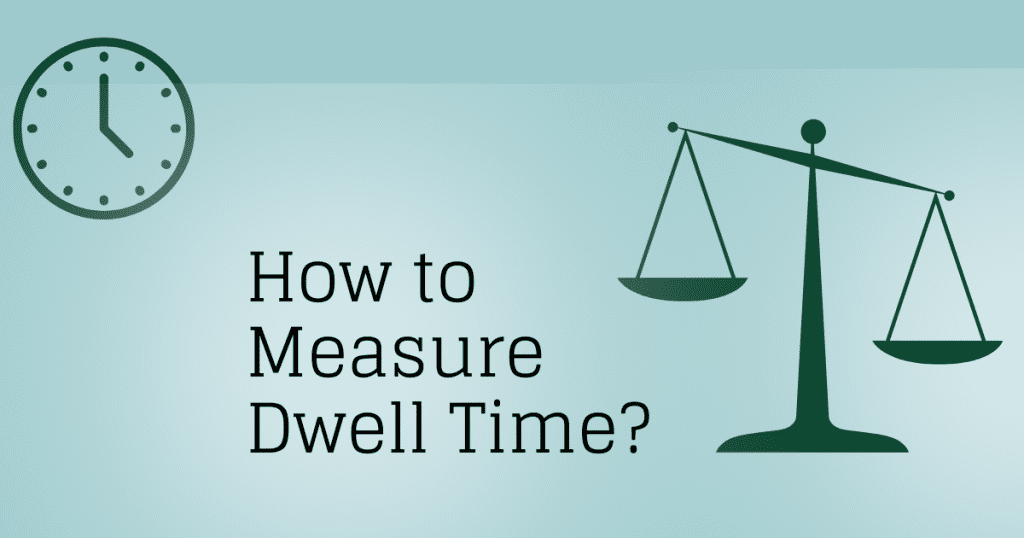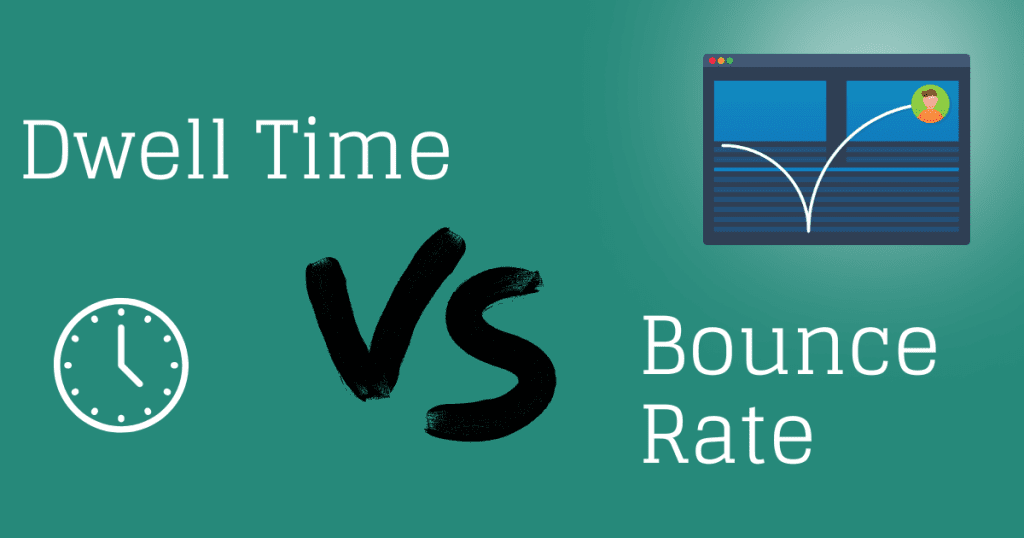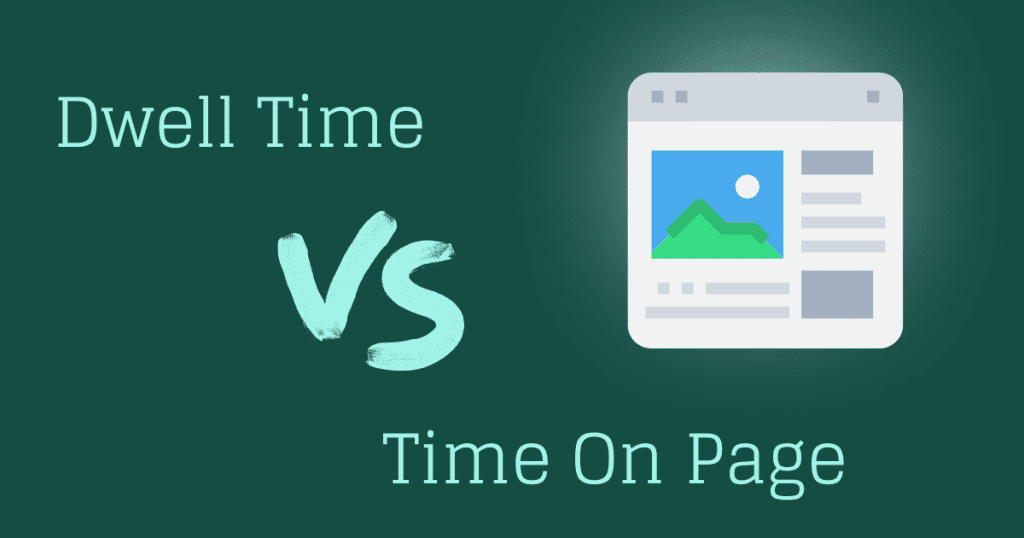We all know the feeling of being glued to a website, article, or piece of content – unable to look away for minutes on end. This intense user engagement is reflected in an important analytics metric called ‘dwell time’.
Dwell time measures how long a user stays active on a specific webpage in a single session. High dwell time means users find your content engaging enough to keep reading and interacting. For website owners, it signals content that resonates with users and encourages organic rankings. For an enhanced user experience and better SEO, improving dwell time should be a priority.
In this article, we’ll dive into what affects dwell time, its key benefits, and strategies to optimize it effectively across your website.
What is Dwell Time?

Dwell time defined refers to the duration for which a user is actively engaged with a webpage, demonstrating interest through scrolls, clicks, and mouse movements. This differentiates it from related metrics like bounce rate (exit percentage) and general time on page.
It is challenging to measure dwell time directly. Most analytics platforms use algorithms to calculate a ‘perceived’ dwell time based on user actions. Therefore, dwell time provides a user-centric estimate of engagement rather than definitive time measurements.
Multiple external and internal factors impact dwell time significantly, including:
- Content quality, relevance, structure
- Website design and mobile optimization
- Page load speeds and technical issues
- Internal linking and logical user flow
Is Dwell Time a Google Ranking Factor?

While Google does not directly use dwell time as an input in their ranking algorithm, it is a signal they interpret to assess quality and relevance. Pages ranking higher organically typically enjoy longer dwell times and lower bounce rates.
Google wants to surface search results that best satisfy user intent and needs. So when they notice pages on a domain having higher dwell times, it suggests visitors are finding the information useful, engaging and relevant to what they searched for.
This signals to Google that the content resonates with users better than competing pages ranking lower. As a result, dwell time essentially serves as an accuracy validation mechanism for Google’s rankings.
If newly top-ranking pages suddenly demonstrate very low dwell times, Google interprets that as a bad sign of mismatched user intent or poor quality content. They may then tweak algorithms to demote those pages for more relevant results.
How to Measure Dwell Time

Here are the main ways to measure dwell time:
Use Google Analytics: Google Analytics has a built-in metric for “Average Time on Page” under the Behavior > Site Content section. This provides a dwell time estimate calculated based on user actions like scrolling and mouse movements. It’s the easiest way to get a dwell time snapshot across your site.
Segment Analytics by Traffic Source: View dwell time specifically for organic search traffic to see engagement levels from Google rankings vs other channels. Compare metrics for landing pages and high-value content as well.
Analyze Clickstream Data: Some analytics tools like Hotjar collect more advanced clickstream data on user actions including scrolling, clicks, movements. This generates more granular dwell time behavioral maps – but requires added setup.
Calculate Manually: While not scalable, you can manually time a sample of users on a page during user testing. Track start/stop times when they navigate away to calculate an average page dwell time.
Correlate with Other Metrics: Indirect signals like lower bounce rates and higher pages per session typically accompany higher dwell time. Factor these together to validate engagement levels.
Boost Your Website with High Dwell Time

High dwell time is a strong indicator of user-perceived value and satisfaction. In turn, it powers crucial growth and conversions across business goals:
Improved SEO and Organic Ranking
Higher engagement metrics like dwell time and low bounce rates signal search engines that content resonates with users. This raises authority and rankings in organic results.
Enhanced User Engagement and Satisfaction
When users actively engage with content, it suggests they find it useful, interesting, and worth their time. This directly translates to happier, loyal visitors.
Better Conversion Rates and Lead Generation
Dwelling users have expressed interest – making them primed for conversions. High dwell time gives you more opportunities to present CTAs, ads, offers, and other calls-to-action.
Optimizing Your Website for Higher Dwell Time

Now that we’ve covered the fundamentals, let’s explore actionable strategies to enhance dwell time website-wide.
Craft High-Quality, Engaging Content
Informative, well-structured content tailored to audience needs is the baseline for engagement. Optimize content with relevant keywords targets users actively seeking your solutions.
Format for Readability and Navigation
Break up text with descriptive headers, highlights, and multimedia for easy skimming. Structure content so visitors seamlessly flow through key information.
Promote Internal Linking
Links to related articles help users explore more of your content once they find a topic interesting. Send visitors down an intuitive rabbit hole tailored to their intent.
Incorporate Visual and Interactive Elements
Videos, gifs, quizzes, calculators – interactive content showcases information effectively and encourages visitors to linger.
Optimize Technical Elements
Fast load speeds, seamless navigation and no broken links are essential, especially on mobile. Eliminate technical frictions distracting users from your content.
Encourage User Participation
Comments, user-generated content and social sharing foster brand community. Prompt participation through polls, discussions and forums seeded with great questions.
With a comprehensive content and optimization strategy targeting engagement, you can expect tangible lifts in dwell time and associated benefits. Measure against your core metrics pre and post-optimization to quantify impact. Pay attention to traffic sources and landing pages showing the highest gains to double down on what works.
Dwell Time vs. Bounce Rate

When analyzing user engagement, two metrics you’ll encounter are dwell time and bounce rate. While related in the context of site experience, they measure distinctly different behaviors. Dwell time shows how long visitors actively spend consuming a specific page’s content.
In contrast, bounce rate is a wider funnel metric tracking the percentage of visitors that enter the site then leave after only a single page. Bounce rate reveals problems convincing visitors to explore further. Meanwhile dwell time hones in on the resonance of particular pieces of content.
For deeper optimization, leverage both. Dwell time helps tailor and elevate engagement page by page through relevance and quality. Bounce rate spotlights needed refinements across initial site presentation, speed, and navigation to capture visitors in the first place.
Together the metrics provide a well-rounded context to enhance engagement both broadly and at the granular content level for every visitor segment.
The key is to isolate high dwell time pages engaging visitors already, identify common themes, and replicate that effectiveness across all key pages. Similarly examine high bounce rate pages dragging down exploration and diagnose the universal turnoffs. Tackled together, dwell time and bounce rate metrics reveal a clear roadmap to boost engagement.
Dwell time vs. Time On Page

Dwell time and time on page are related but distinct metrics regarding visitor engagement:
The main differences are:
- Dwell time specifically measures active time spent engaging with a page through scrolling, clicks etc. Time on page is a raw total including all inactive time as well.
- Dwell time aims to capture user attention and resonance with content. Time on page could increase simply due to slow site speed without engagement.
- Dwell time provides a proxy for content quality and relevance to visitors. Extremely high raw time on page may indicate confusion and poor UX.
- Dwell time isolates user-initiated engagement with the site. Time on page can spike from distractions, multitasking, interruptions.
The Takeaway
At its core, high dwell time signals you are providing real, perceivable value to visitors through your content. By doubling down on quality, relevance and seamless user experience, you can transform disengaged website bounces into loyal brand advocates progressing further down the conversion funnel. What gets measured gets managed – start tracking dwell time to unlock better conversions and organic growth.
FAQs
Q. Why is Dwell Time Important?
Dwell Time reflects content relevance. Search engines may interpret longer dwell times as a signal of quality and user satisfaction.
Q. Does Dwell Time Affect SEO?
Yes, it does. Search engines, like Google, consider Dwell Time as one of the factors in evaluating the quality and relevance of a webpage.
Q. Can Dwell Time Impact Rankings?
Yes, it can. Higher dwell times may contribute to improved search rankings, indicating to search engines that your content satisfies user intent effectively.
Q. Can Bounce Rate Affect Dwell Time?
While related, bounce rate and dwell time measure different aspects. A low bounce rate doesn’t necessarily guarantee a high dwell time. Focus on both metrics for a comprehensive view.
Q. What Role Does Content Quality Play in Dwell Time?
Content quality is crucial. Engaging, valuable content encourages users to stay longer, positively impacting dwell time and overall SEO performance.

